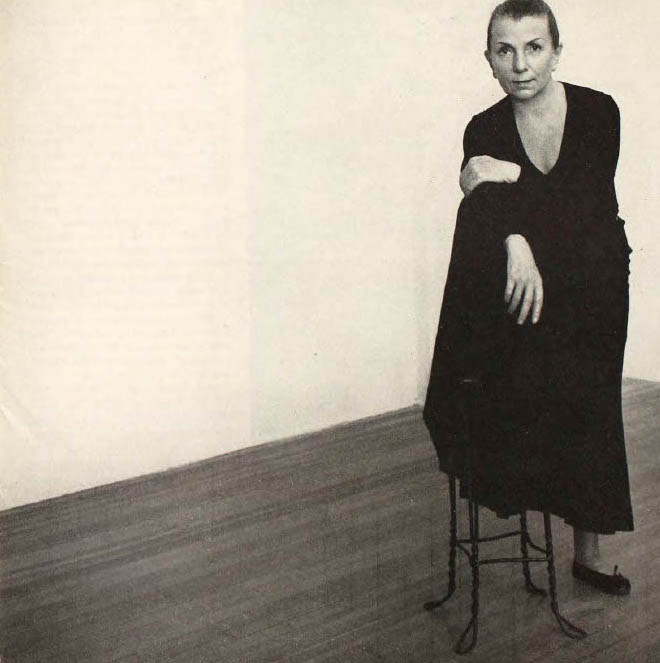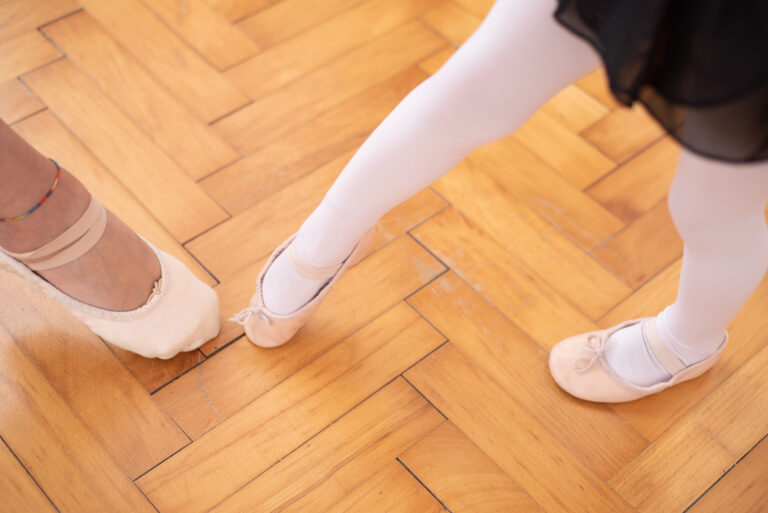
Most ballet teachers like to reserve the last part of class for jumping, a time when students happily try to defy gravity and take flight. But some dancers have difficulty getting off the ground. Maybe they don’t use their plié or struggle to coordinate their arms and legs to achieve a strong position in the air. “Dancers have to be patient and set themselves up properly,” says Philip Neal, artistic director of Next Generation Ballet in Tampa, Florida. “Developing good jumps is a process, not an event.” The key parts to that process? All good jumps require good placement, rhythm and practice.
1. Back to the Barre
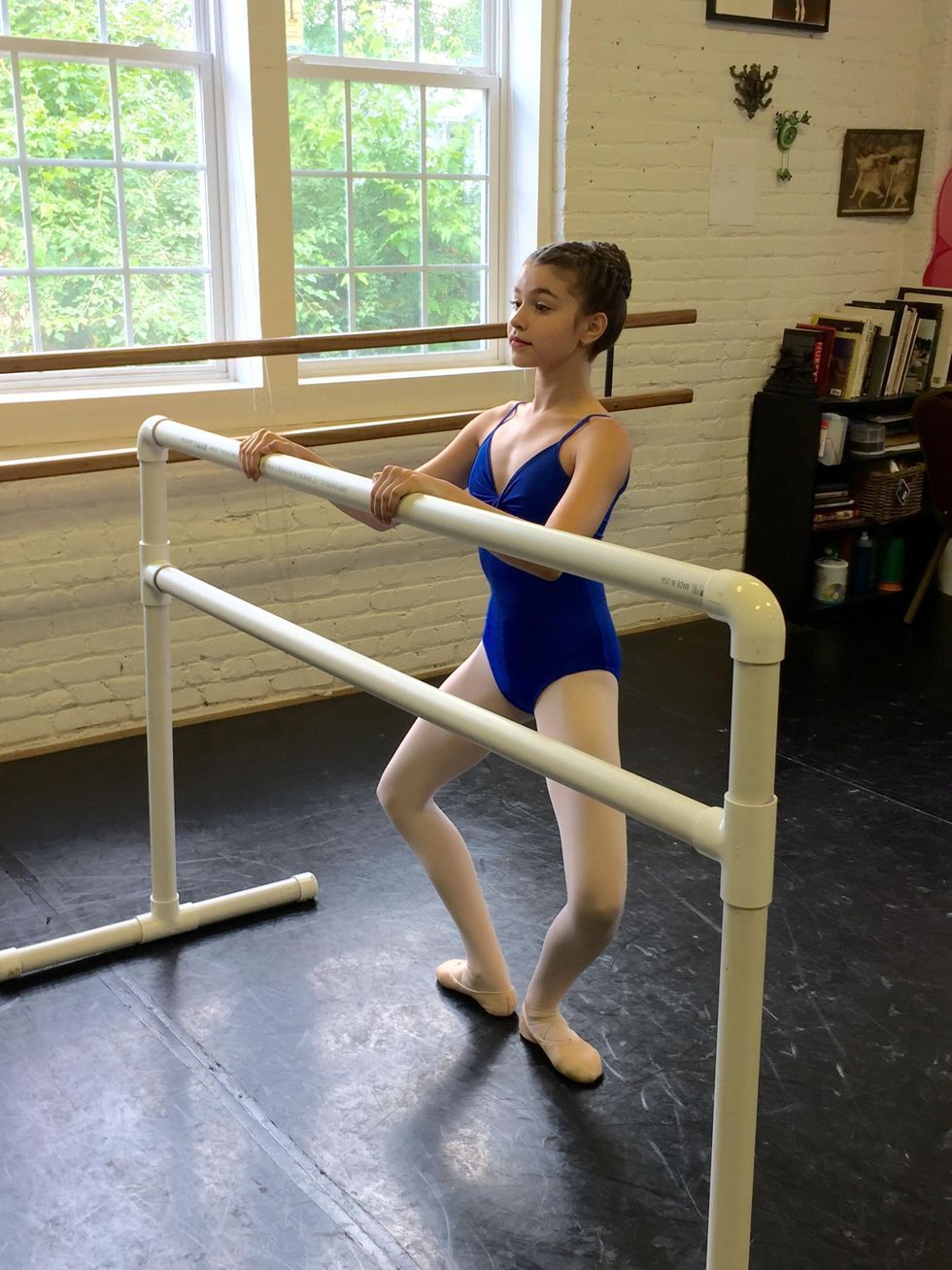 Photo 1, courtesy of Diana
Photo 1, courtesy of Diana
Whether you are introducing jumps to young students or taking advanced dancers back to basics, simple relevé-and-jump exercises at the barre will reinforce proper mechanics. Weight should be on the balls of the feet, knees pressed back toward the little toes in plié and chests lifted, not concave (see photo 1). “Placement is the key to jumping correctly,” says Hilda Morales, The Hartt School faculty member at the University of Hartford. “Repetition with good alignment helps develop the muscles correctly.”
 Photo 2, courtesy of Diana
Photo 2, courtesy of Diana
Morales gives slow relevés in each position, then faster relevés that dancers hold for a few counts at a time. In relevé, “students have to engage the seat muscles, bring the heels forward and lift the muscles above the knees,” she says (see photo 2). Then Morales will introduce jumps, such as sautés, changements and échappés, making sure students don’t press down too much on the barre and pike their lower halves (see photo 3).
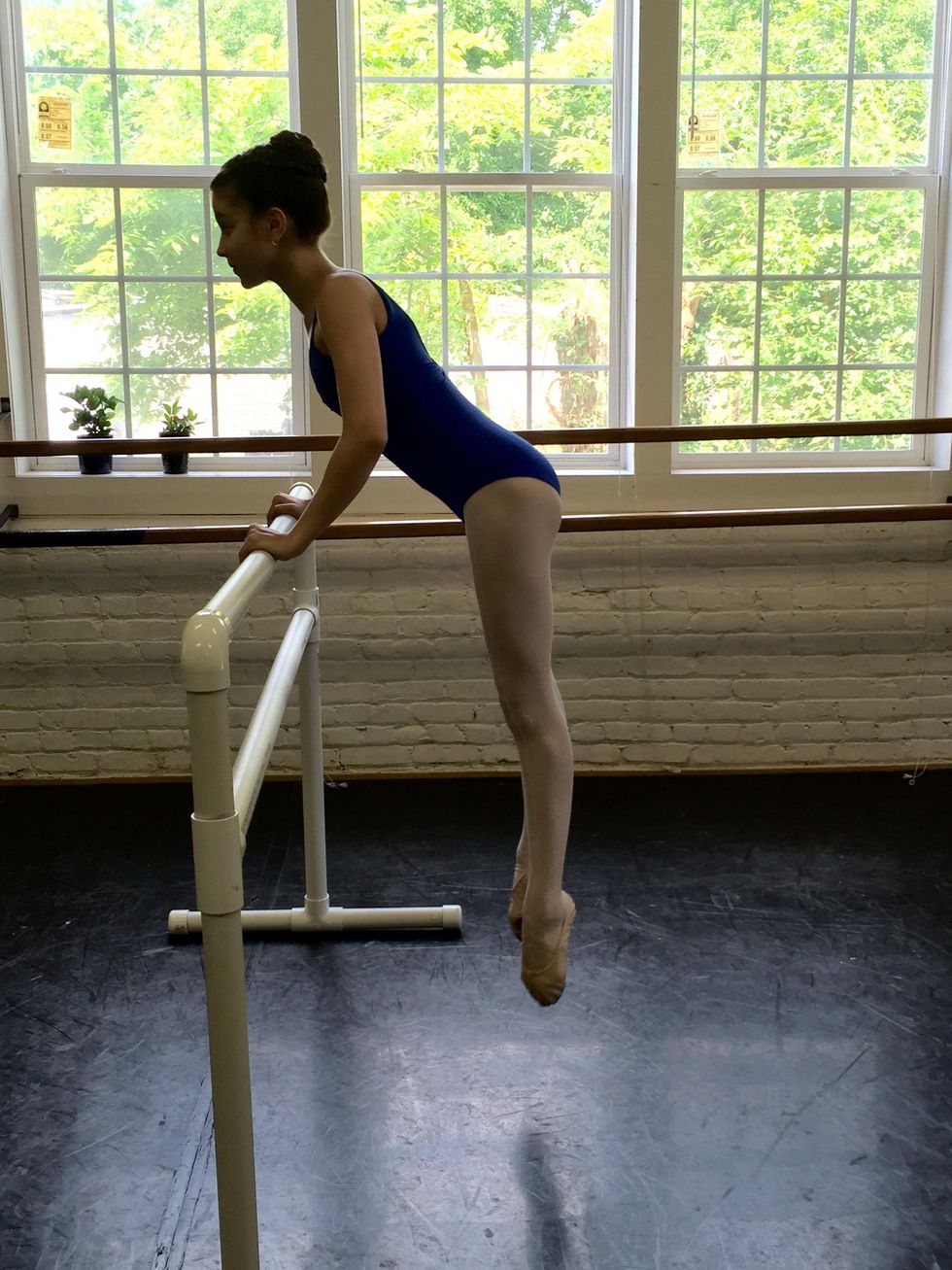 Photo 3, courtesy of Diana
Photo 3, courtesy of Diana
2. Rhythm and Plié
Simple steps like skipping and chassés help children get a sense of both ballon (lift and bounce) and rhythm. This natural feeling should be carried over into more complex jumping sequences, so dancers don’t stop the momentum at the bottom of a plié. “The entire body has to have a rhythm,” says Jeffrey Rogers, principal faculty at Ballet West Academy. “Ballet technique is highly codified, but it still requires a natural impetus.”
To emphasize the need for a good plié, Rogers talks about how a ball has to be bounced down before it goes up. “A plié is an elastic movement, so dancers shouldn’t snap their knees back together,” says Rogers. He also teaches different kinds of pliés: fast preparations for petit allégro and slower, deeper pliés for big jumps.
3. Leave the Arms Off (and Then Add Them Back In)
 Photo 4, courtesy of Diana
Photo 4, courtesy of Diana
Neal sometimes has students do small jump combinations with their hands clasped behind their heads (see photo 4). “I make them do petit allégro this way to help them stand up straight,” he explains. “The back should be long and the chest broad and proud. Then we do the same steps with the arms down, and then again adding port de bras.” Students can try this no-hands exercise if they are already capable of doing jumps at the barre and preparatory jumps in center. “Our boys find it thoroughly entertaining,” says Neal, “and it reminds them of where their strength is coming from—the core.”
When dancers add port de bras, they often work against themselves by not coordinating the full-body effort. Arms should arrive at their position at the height of the jump, says Neal, and hold the position when the student lands. “It’s an optical illusion to show that you’re still jumping even though you’ve come down to the floor,” he says. “It helps dancers who don’t have a big jump look like they do.”
4. Fun Imagery
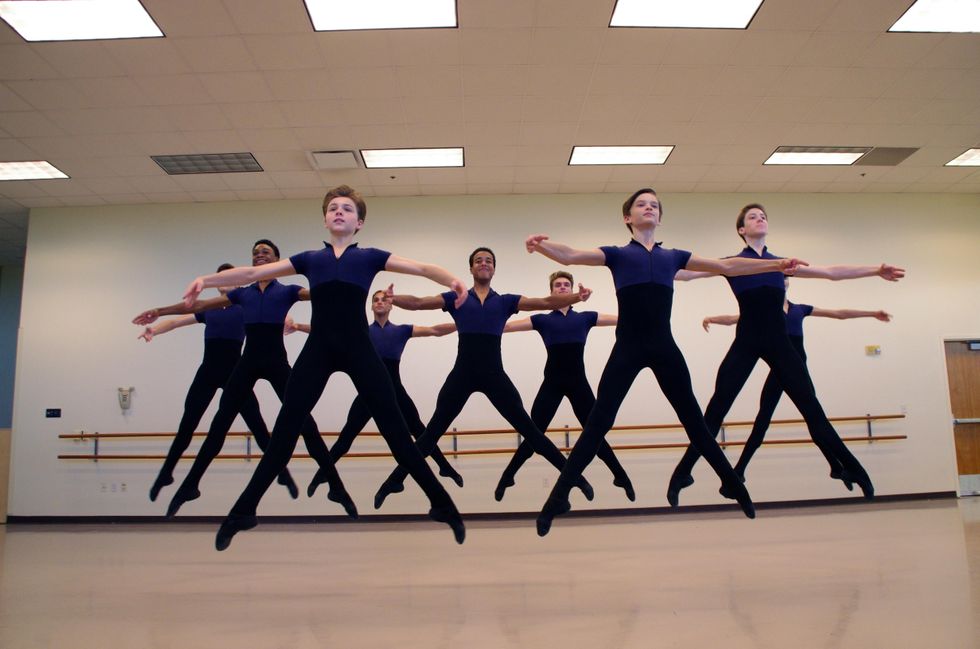 Neal suggests breathing between jumps to replenish blood flow to the legs. Photo by Maxwell Bolton, courtesy of Neal
Neal suggests breathing between jumps to replenish blood flow to the legs. Photo by Maxwell Bolton, courtesy of Neal
Instead of physiological corrections, try imagery to help students take the right approach. “Fly like a bird” or “hover in the air” might be good visuals for suspended jumps. When working on Bournonville jetés, Rogers tells students to imagine that they are running and jumping onto a waxed table, then sliding across it in their jeté position. For barrel turns, he tells boys to think about rolling across the hood of a car. Rogers likes to call saut de chat a “photo op,” whereas grand jeté is an up-and-over kind of movement that you would see in real life. He likens this big jump to the way African gazelles run: high, lifted and suspended.
“Traveling jumps are naturally easier for people,” he says, “although they still have to create that lifted feeling that goes up and over. No other dance form uses vertical jumps the way that ballet does, and dancers don’t usually like to work on them. But the only way for a student to get better at jumping is to do it—a lot.”



